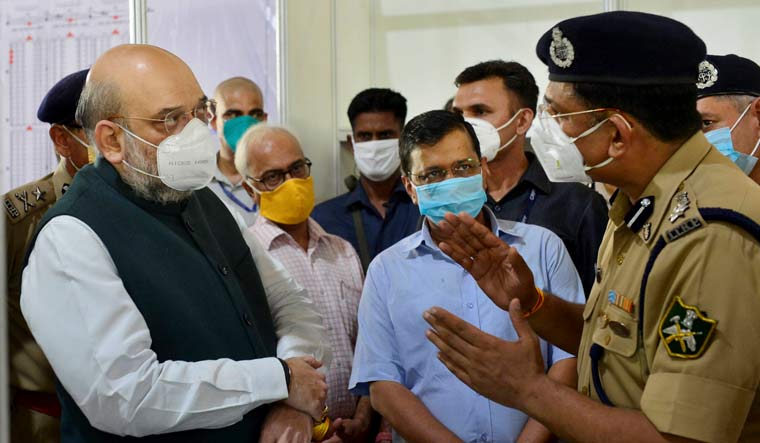New Delhi: After around 40 days of Union Home Minister Amit Shah taking direct charge of the Covid-19 situation in Delhi, the virus’ rate of infection graph in the national capital seems to be moving towards a plateau.
The total number of Covid-19 positive cases in Delhi since the last one week has remained around 1,000 a day on an average, while testing in the national capital has increased manifold, bringing down the test positivity rate drastically.
Delhi is currently testing more than 20,000 patients daily, both symptomatic and asymptomatic, and the test positivity rate in Delhi stands at 7.9% at present.
The active cases in Delhi have also started to decline since the last week of June. Currently, the rate of recovery is greater than the number of new cases being added in the national capital. As on Friday, the total number of active Covid-19 cases in Delhi was a little more than 10,500.
The recovery rate of Covid-19 patients had picked up since 20 June, when on an average more than 4,000 Covid-19 positive patients were recovering each day. Even at present, with the total active cases being at around 10,743, the recovery rate is around 1,500 per day.
In contrast, in the period of May and the first three weeks of June, Delhi was witnessing more than 1,500 to 1,700 positive Covid-19 cases every day during, while the testing during the same period remained poor, with the Delhi government conducting just around 4,000 to 4,500 tests per day.
The recovery rate of Covid-19 patients during that period also stood at 300 to 500 patients per day, while Delhi was adding more than 1,500 to 1,700 cases every day.
Delhi was also recording one of the highest test positivity rates in the country during the first few weeks of June, with more than 15% of the total people being tested turning out to be positive.
The increasing number of Covid-19 infections and increased test positivity rate in the national capital were coupled with the shortage of beds in hospitals. The private hospitals were then refusing to accept Covid-19 patients, while the Delhi government had also ordered the stopping of testing in private and many government laboratories. This left patients struggling to find themselves a testing centre or a hospital bed.
Social media was then full of posts where citizens were outraged against the Delhi government—there were posts and cries for help as some Covid-19 patients died outside hospitals for the lack of treatment. Many Delhiites at the time had started questioning the Delhi government’s model of healthcare on which the Aam Aadmi Party had won the Delhi Assembly elections earlier this year.
The Sunday Guardian had reported about the crisis on 6 June, “Covid-19 patients struggle for tests, hospital beds” where the correspondents had highlighted how difficult it had become to find a testing centre or a bed for a suspected or Covid-19 positive patient in Delhi, even when the Delhi government had kept advertising the large number of vacant beds on their website and Covid app.
In view of this crisis in the national capital, Home Minister Amit Shah and the Ministry of Home Affairs (MHA) stepped in to take control of the situation. The MHA started working in close coordination with the Delhi government to increase the number of testing and bed facilities in hospitals across Delhi.
On 15 June, Amit Shah visited Delhi’s biggest Covid-19 facility at the LNJP (Lok Nayak Jayprakash) Hospital to take stock of the situation. Within a few weeks, the Ministry and the Delhi government had also built India’s largest Covid care facility at the Radha Soami Satsang Beas in Chhattarpur in Delhi, having 10,000 beds.
Currently, Delhi has more than 13,650 Covid-19 beds vacant across different hospitals, in contrast to the situation in May and early weeks of June where patients were struggling to get themselves a bed in the national capital.
Testing facility was also ramped up in the national capital. The Delhi government, in coordination with the MHA, started aggressive antigen testing across the city, and also increased RTPCR testing. The Delhi government also brought in a home isolation scheme for mild symptomatic and asymptomatic patients where these patients would be given care by doctors at their residence.
The Delhi government, in coordination with the MHA, also started providing oximetres for measuring oxygen levels in Covid-19 positive patients at home and should there be a drop in the oxygen level, oxygen cylinders would be made available for them at their residences.

